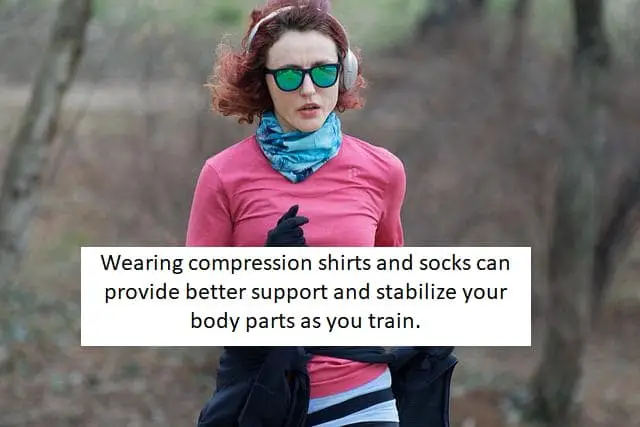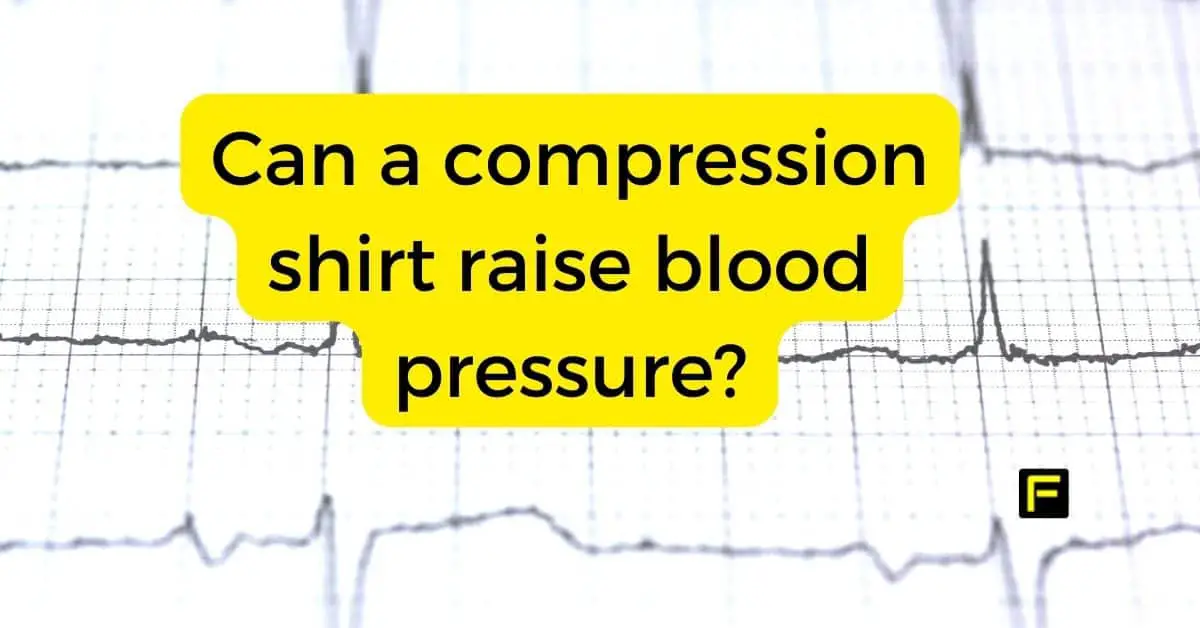Compression shirts are often worn by people who have a medical condition that causes their muscles to ache or their blood vessels to swell. Compression shirts help to reduce the pain and swelling by providing support and stability to the affected area. In some cases, compression shirts can also help to improve blood circulation and prevent blood clots from forming. However, you may wonder… Can a compression shirt raise blood pressure?

Can a compression shirt raise blood pressure to the point of being unhealthy?
No. Based on recent studies there is no significant difference in blood pressure recorded while exercising while wearing a compression shirt. ((Beliard S, Chauveau M, Moscatiello T, Cros F, Ecarnot F, Becker F. Compression Garments and Exercise: No Influence of Pressure Applied. Journal of Sports Science & Medicine. 2015;14(1):75-83.))
What are the health benefits of wearing a compression shirt?
Wearing a compression shirt has a plethora of health benefits that are often overlooked. For starters, compression shirts help improve blood circulation throughout the body.
This is especially beneficial for those who sit for long periods of time or have a sedentary lifestyle.
Additionally, compression shirts help to reduce muscle soreness and fatigue, as well as improve recovery time after physical activity.
Related…Compression shirts for back pain
Another great benefit of compression shirts is that they can help to prevent injuries. This is because compression helps to support the muscles and joints, which can reduce the risk of strains and sprains. ((MacRae B.A., Laing R.M., Partsch H. (2016) General Considerations for Compression Garments in Sports: Applied Pressures and Body Coverage. In: Engel F., Sperlich B. (eds) Compression Garments in Sports: Athletic Performance and Recovery. Springer, Cham))
Further, compression can help to reduce the risk of deep vein thrombosis (DVT), which is a serious condition that can occur when blood clots form in the deep veins of the body.
So, if you are looking for a way to improve your circulation, reduce muscle soreness, and prevent injuries, then wearing a compression shirt is a great option!
Learn more about how compression shirts work.
How to buy the right size compression shirt
When looking for a compression shirt, it is important to find one that fits well. The shirt should be tight but not too tight. It should also be comfortable.
To find the right size, it is best to measure your chest and waist. Once you have these measurements, you can consult a size chart.
Most size charts will have a range of sizes that will fit you based on your measurements. It is also important to consider the type of compression you need.
If you are looking for compression to help with recovery after a workout, then a light or moderate compression shirt will suffice.
But, if you are looking for compression to help with a more serious condition such as lymphedema, then you will need a stronger compression shirt. ((Engel F., Stockinger C., Woll A., Sperlich B. (2016) Effects of Compression Garments on Performance and Recovery in Endurance Athletes. In: Engel F., Sperlich B. (eds) Compression Garments in Sports: Athletic Performance and Recovery. Springer, Cham))
When choosing a compression shirt, it is also important to consider the material. Some materials are more breathable than others.
If you are going to be wearing the shirt for long periods of time, then it is important to choose a shirt that is made from breathable material.
Finally, it is important to choose a compression shirt that is comfortable. You should make sure that the shirt does not rub or chafe. Make sure that the shirt is not too tight, as it can cause discomfort or even pain.

Claudia Faucher is a full-time fitness training expert and lifestyle blogger. She is also been a certified Les Mills BodyPump instructor for the past 5 years and a fitness instructor for over 20 years. Claudia is a personal trainer and creates fitness training programs for seniors and people of all ages. She likes to use her skills and experiences to help others on their fitness journeys.
